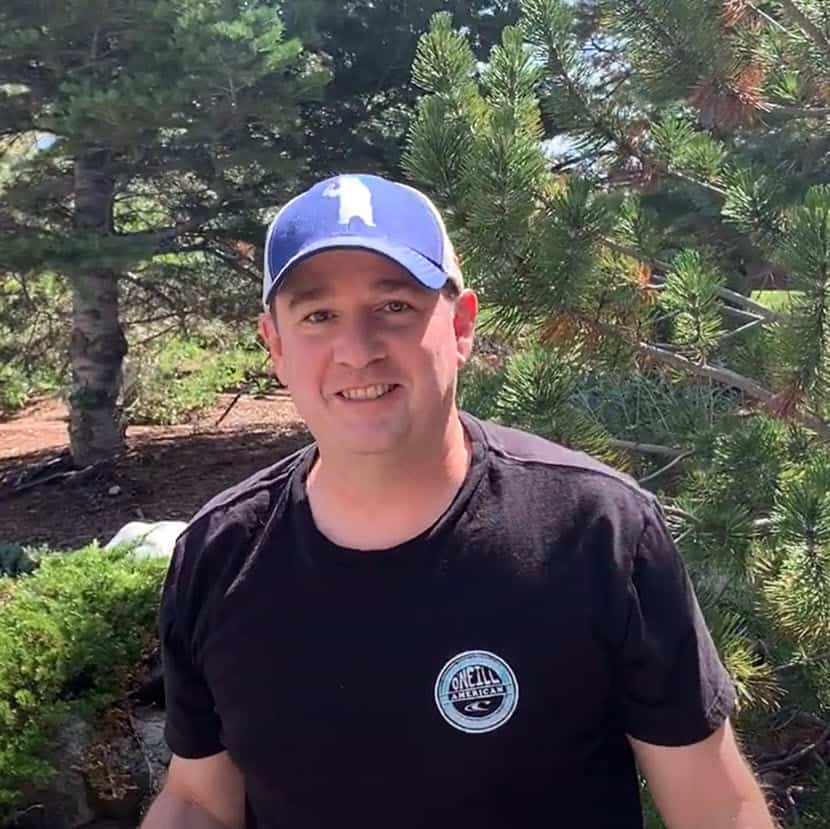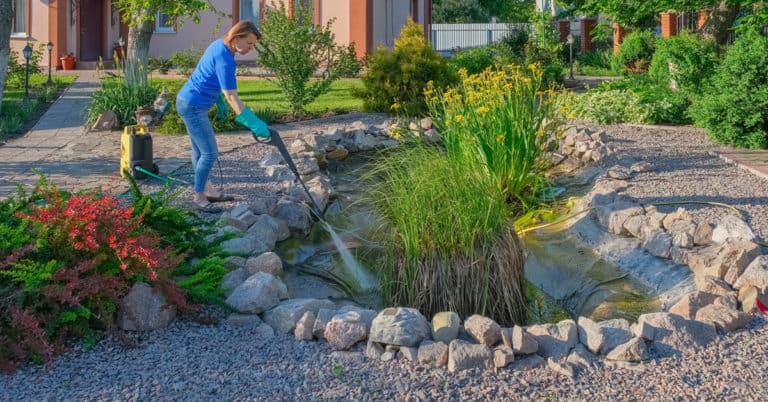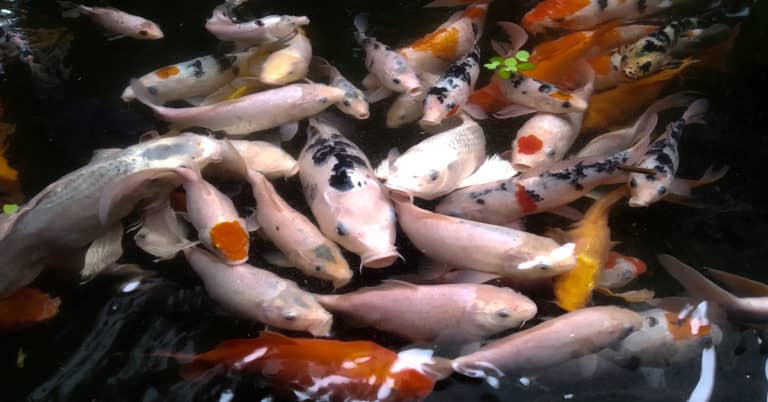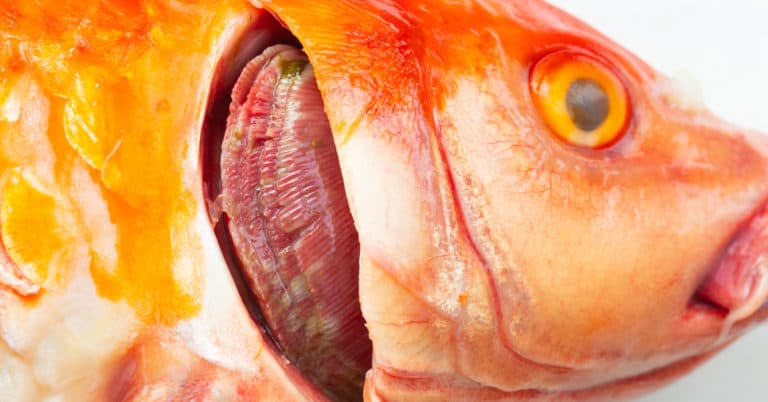Finding a leak in your koi pond is an alarming discovery. You’re worried about your fish and plant life, of course. A leaking pond also makes you realize you’re wasting a lot of water.
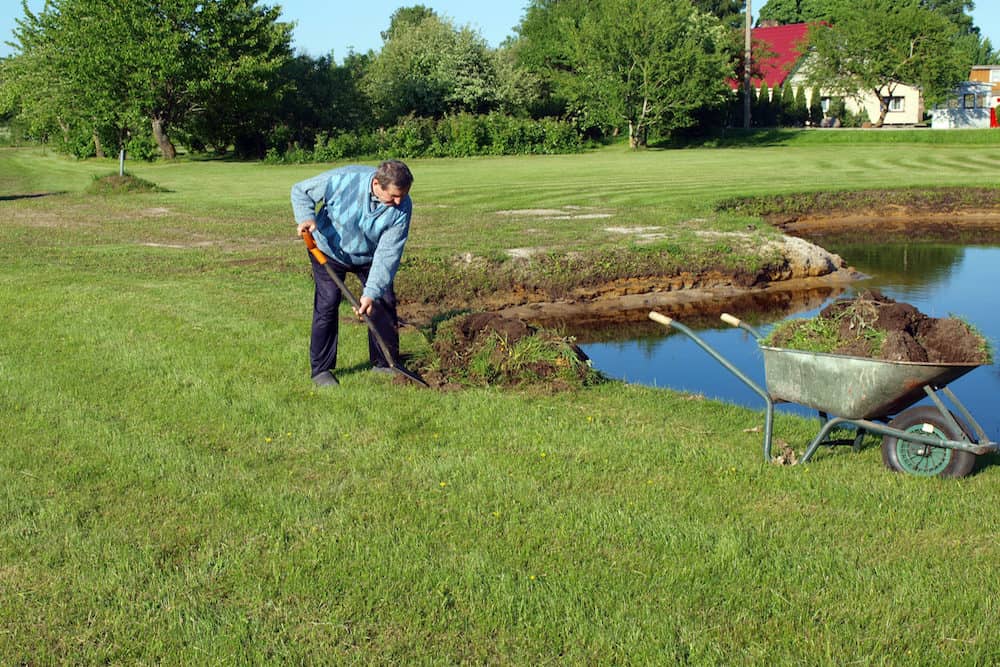
It’s not hard to find leaks in your koi pond. Once you find the source, you’ll learn how to decide if you should repair or replace your pond liner.
If you think you have a leak in your koi pond, you first need to find it. Then you should repair or replace it. But you don’t have to wait around for another leak because there are many different ways you can prevent future koi pond leaks.
Repairing a leak can be a frustrating and time-consuming process. This is definitely one of the tasks where you're going to want to consider bringing in outside experts. Check out our koi maintenance companies page to find someone local to you who can help you fix leaks in your pond.
If you notice that your pond’s water level is dropping, you know you have a leak somewhere. The leak is often in your pond liner. A tear or hole will allow the water to seep out into the ground.
A gradual change in your pond water most likely is evaporation, not a leak. If you live in a hot climate, you’ll notice this happening during the warmest months of the year. Evaporation can change the water level by one or two inches each week.
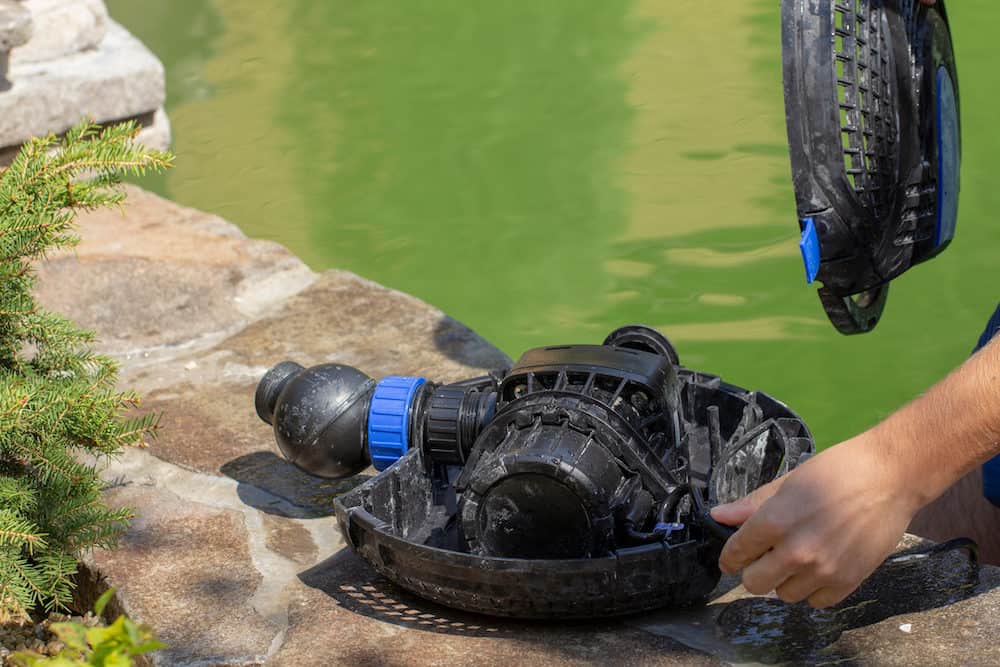
Rainfall can naturally replenish the water that evaporates, so you might not even notice this. If you live in an area that doesn’t get much rain, you can top the pond water up manually.
A koi pond with a waterfall will experience more evaporation. That happens because a waterfall or other water feature, like a fountain, exposes more water vapor to the heat, so more will evaporate.
Losing more than two inches a day means you’re looking at a leak, not simply evaporation.
Not every pond leak is due to a faulty or worn liner. There are also leaks in pond equipment. You might have a faulty skimmer box. A skimmer box has to attach directly to the pond liner, or else water will leak into the ground. If you see gaps between the skimmer box and the liner, you can repair them with pond liner tape.
If you have a waterfall in your koi pond, your leak could originate there. Something blocking the flow of the water will misdirect it so that water seeps over the sides of the pond basin. You’ll most likely notice the wet ground around the waterfall, but the change in water level might attract your attention first.
There could be leaks in the pond circuit hoses as well. You have to inspect these yourself to see if they leak water while they’re running. Check hoses at every step of the way, from the filter to the pump.
The easiest way to check your equipment is to unplug everything, including the pump and pond filter. Leave your pond for a day and see if the water levels change. If there’s water loss even without equipment running, then the leak is clearly in your pond liner.
Though you’ve determined that the source of your koi pond leak is the pond liner, you still have to find the right spot. The easiest way to do this is to let the water leak out of your pond as it has been. Don’t top it off manually. The water will stop leaking out once it reaches the trouble area.
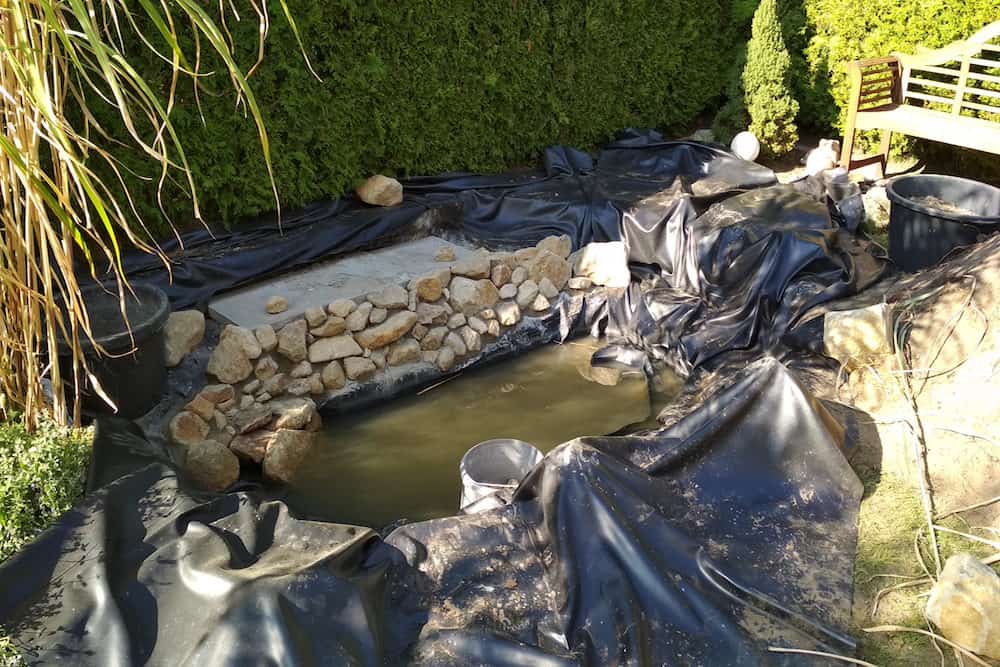
Once the water drains away from the leak, you’ll have a clear view of what you’re dealing with. You’ll see large holes easily, but some small tears are harder to spot. If you can’t see the rips themselves, look for bubbling where the water and air are escaping through the liner.
You might find that it’s still difficult to see the source of the leak. In that case, you can top off the pond water and add a small amount of milk or pond dye. The leak draws in the water, and with the milk or dye added, you’ll be able to spot the tear.
There could be one or multiple leaks in the liner, and they could be big or small. All of these factors will impact your approach to koi pond leak repair.
Small rips in the pond liner are easy to repair. Even if you have several small tears, you can fix these leaks with a pond sealer or other solutions. This type of pond repair isn’t difficult or expensive to do.
Larger holes are harder to fix. You might be able to patch it up, but it’s more likely to leak again. In that case, it’s worth replacing the pond liner or upgrading to a sturdier pond basin.
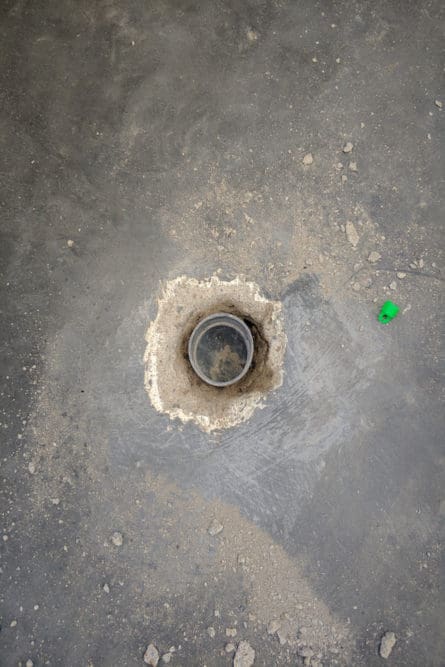
Replacing your pond liner doesn’t have to cost a lot. Even if you choose a stronger product, know that it’s worth the investment because it can last more than 20 years. It’s often the best choice since it will last longer than an older or damaged pond liner and ensures you won’t continue losing water.
If you choose to replace your pond liner, think ahead to how you’ll store and reacclimate your fish. You’ll have to drain your pond and clean it before installing the new liner. Then you’ll have to cycle the water to make the healthiest environment for your koi fish.
Koi pond leak repair doesn’t have to be a major job. You can buy a repair kit that will patch several small or medium holes. The kit includes patches with waterproof adhesive on one side.
You have to let the liner dry before you can apply the product. Clean the area with the kit cleaner to ensure the patch will stick to your liner instead of losing its stickiness to grime.
Cut the patch to fit the leak. It’s best to cut patches into circles so there are no corners to fray. They’ll last longer this way. Press the patch onto the leak and hold it in place until it feels secure. Use the roller included with the kit to roll out any air that got trapped during application.
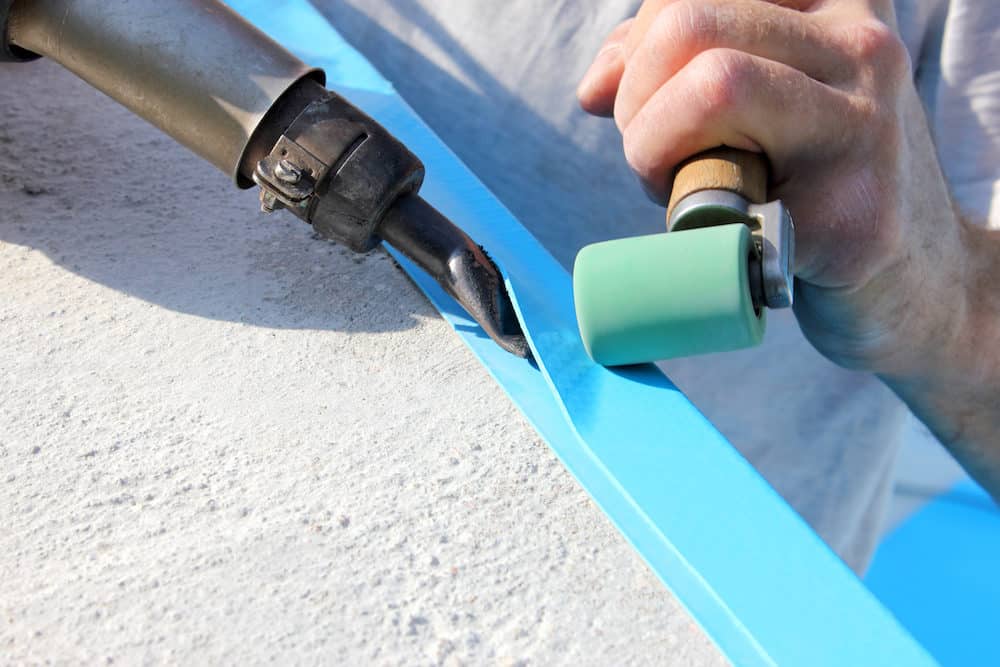
You can fill the pond with water after letting the patch set, which only takes a few minutes.
If you don’t want to use patches, you can use repair sealant. This is easy to apply because it’s liquid rubber that you put on leaks. Repair sealant is typically best for very small holes. They can fill in a leak that’s up to two inches wide.
Just as with patches, you need to drain the pond and find the hole. The sealant container comes with a nozzle that you aim at the leak. Apply the sealant and let it expand and cure to bond with the liner.
One downside to sealant is that it takes at least eight hours to set, so you can’t refill your pond as quickly as you can when using patches. Pond liner repair sealant also isn’t as durable as patches. Pond liner repair sealant is safe for fish and plants, so once it cures you can feel confident that your pond is a healthy environment.
However, it’s cheap to buy and easy to use, so some pond hobbyists swear by it. I’ve tried both patches and sealant and think they both work well, depending on your leak. It’s a good product to have around because you can use sealant on other leaks around the pond. I’ve used it to redirect the flow of a waterfall or even to patch a circuit hose.
If this home fix doesn’t work out, it might cost you upward of 800 dollars to get a professional out to repair the pond if you aren’t sure exactly where the problem is. If you know where the problem is and the size is manageable a professional can do it for around 150 dollars.
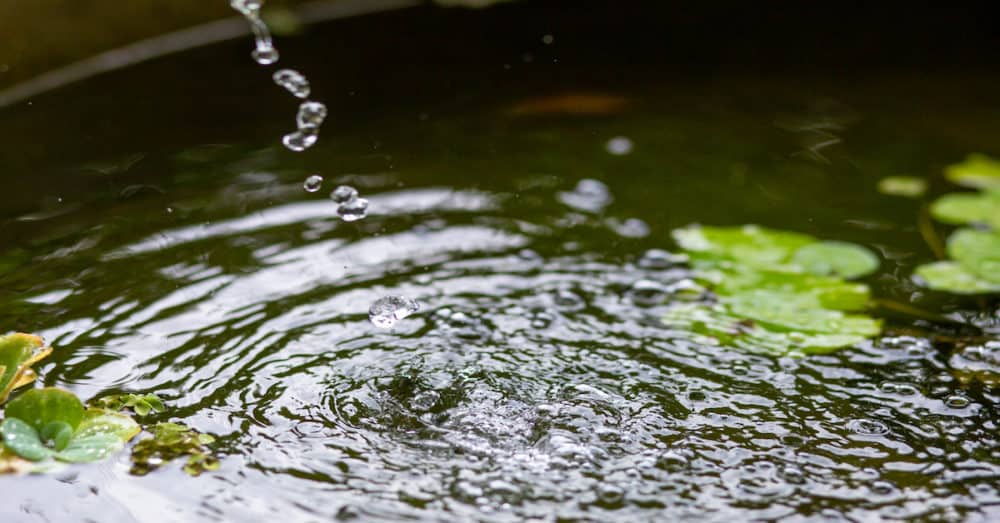
You need to keep koi fish in a holding tank while you’re repairing your pond liner. You might want to transfer them as soon as you notice the leak, just for safekeeping. After all, you’re letting some of the water drain out so you can find the source of the leak. If the leak is at the bottom of the liner, your fish will need to stay somewhere else for a while.
It’s hard to prevent pond liner leaks if you’re not sure how they formed. Some liners can tear as they age or if they rub on concrete pond surroundings. If you notice herons around your water garden, you might suspect that they’ve torn your lining. Adding pond netting to your pond will prevent them from reaching your pond liner.
If you have rocks in your pond, make sure they’re smooth stones. Large, rough rocks might look great, but they’ll damage the liner.
Not all pond liner leaks occur under the water. Make sure you secure the edges of your liner with slabs so they won’t crack and allow water to seep out.
